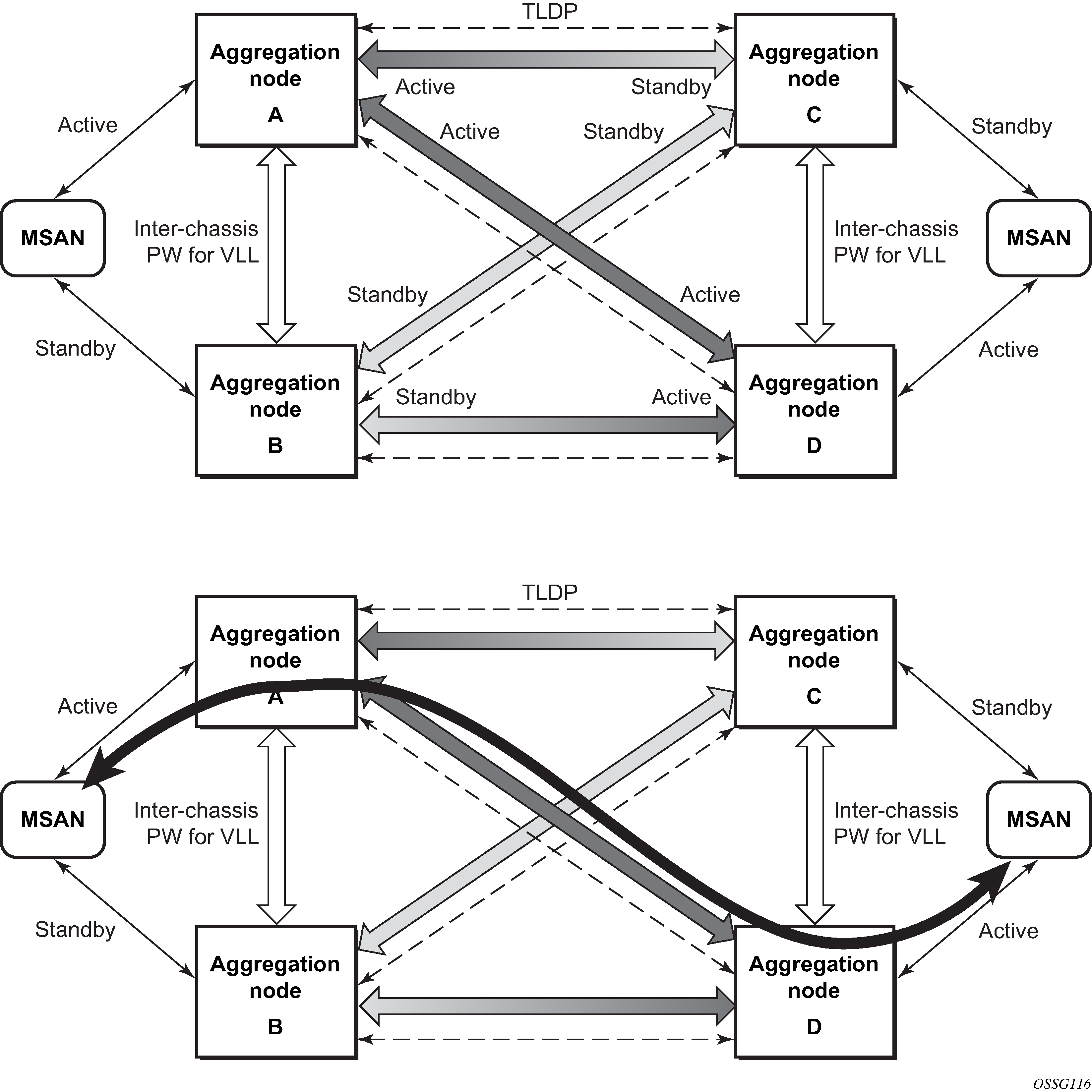Figure: Access node resilience shows the use of both Multi-Chassis Link Aggregation (MC-LAG) in the access network and pseudowire redundancy in the core network to provide a resilient end-to-end VLL service to the customers.

In this application, a new pseudowire status bit of active or standby indicates the status of the SAP in the MC-LAG instance in the SR-series aggregation node. All spoke-SDPs are of secondary type and there is no use of a primary pseudowire type in this mode of operation. Node A is in the active state according to its local MC-LAG instance and therefore advertises active status notification messages to both its peer pseudowire nodes; for example, nodes C and D. Node D performs the same operation. Node B is in the standby state according to the status of the SAP in its local MC-LAG instance, so advertises standby status notification messages to both nodes C and D. Node C performs the same operation.
An SR-series node selects a pseudowire as the active path for forwarding packets when both the local pseudowire status and the received remote pseudowire status indicate active status. However, an SR-series device in standby status according to the SAP in its local MC-LAG instance is capable of processing packets for a VLL service received over any of the pseudowires that are up. This is to avoid black holing of user traffic during transitions. The SR-series standby node forwards these packets to the active node by the Inter-Chassis Backup pseudowire (ICB pseudowire) for this VLL service. An ICB is a spoke-SDP used by an MC-LAG node to back up an MC-LAG SAP during transitions. The same ICB can also be used by the peer MC-LAG node to protect against network failures causing the active pseudowire to go down.
At configuration time, the user specifies a precedence parameter for each of the pseudowires that are part of the redundancy set, as described in the application in VLL resilience with two destination PE nodes. An SR-series node uses this to select which pseudowire to forward packets to in case both pseudowires show active/active for the local/remote status during transitions.
Only VLL service of type Epipe is supported in this application. Also, ICB spoke-SDP can only be added to the SAP side of the VLL cross-connect if the SAP is configured on an MC-LAG instance.